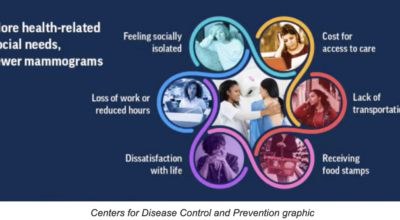Seeking Connection: We see what we’re looking for
Published 2:30 pm Saturday, September 28, 2019

- Erin Smith is the owner of the OM place in Winchester, the author of “Sensible Wellness” and the online host of the OM channel. Follow her on Twitter @erinsmithauthor.
In 2001, Frederic Brochet, a PhD candidate at the University of Bordeaux, invited 54 oenology (wine) undergrads to a wine tasting of a single red and a single white.
When asked to describe the white, the oenophiles used terms like fruity, floral and crisp, words often associated with quality white wines.
The red garnered descriptions like full-bodied, velvety and jammy. Again, no surprise, as these terms are generally associated with quality reds.
What did surprise the wine experts was finding out the two wines were the exact same, a mid-range white.
One glass had simply been dyed with a flavorless food coloring to make it appear red.
While the oenophiles were angry and embarrassed at being duped, what this study reveals is both interesting and empowering.
We see what we’re looking for.
If I hand you a garnet-colored wine, in a goblet traditionally used for serving red, then your brain is going to expect to taste red wine.
This expectation is so strong, it can override other information coming in through your senses (like the smell, mouth-feel and actual taste of the wine).
Wondering how this works and how you can harness that power to live your best life?
Expectations and intentions work through the Reticular Activating System (RAS), a network of neurons located in the brain stem.
The RAS is the filter between the subconscious and conscious mind. It filters sensory input from your subconscious and decides what’s important enough to bring to your conscious awareness. Thank goodness it does.
The brain processes around 400 billion bits of information every second (I’m exhausted just writing that). But only a fraction of that input will make its way to our conscious thought processes.
Basically, the RAS filters out unnecessary garbage so the important information gets through.
For example, if you spend an afternoon in a conference room, that night you probably won’t remember how many chairs were in that room. But you will remember where the exit was, because that information was undoubtedly deemed important by the RAS. Why? Well, if there’s a fire, you don’t care how many chairs were there, you just need to know how to get out of that room.
Here’s another example of the RAS at work.
When Izzie was a toddler, we spent Thursday mornings at the playground. The space was filled with children, all laughing and yelling and crying. I would sit with some other parents and talk, fully engrossed in our conversation, unaware of any specific sounds the kids were making.
Yet if Izzie started to cry, I was immediately alert.
My RAS was scanning the environment for her distinct voice and could filter it from all the other kids’ cries.
Remember our brain is designed to keep us safe, not content.
Left to its own devices, the RAS will spend most of its neural energy scanning the environment for threats to our survival. No wonder humans are so stressed.
A lot of our background thinking is brain cells looking for all the ways things might go wrong.
What I haven’t told you is the RAS can be trained. The RAS cannot distinguish between what is “really” happening in the world and what is “synthetically” happening in your mind.
It is just seeking information that validates your beliefs.
So if you believe it’s a tasty red wine, it’s going show up in your reality as a tasty red wine.
The RAS sees all of your thoughts as truth. It’s going to believe anything you tell it.
Every time you expect things to suck, you’re training your brain to scan for suck.
On the other hand, if you repeatedly tell your brain things are going to be amazing, then that becomes your reality. Those intentions are setting the brain up to filter for awesome instead of suck.
This is seriously empowering information.
We can marry the subconscious and conscious minds by focusing on what we want out of life.
If you focus hard on your dreams, your RAS will help reveal experiences, people and opportunities to help you achieve those goals.
Ready to invite more awesome into your life? Then schedule a date with your brain. And don’t forget the wine.
Erin Smith is the owner of the OM place in Winchester, the author of “Sensible Wellness” and the online host of the OM channel. Follow her on Twitter @erinsmithauthor.



